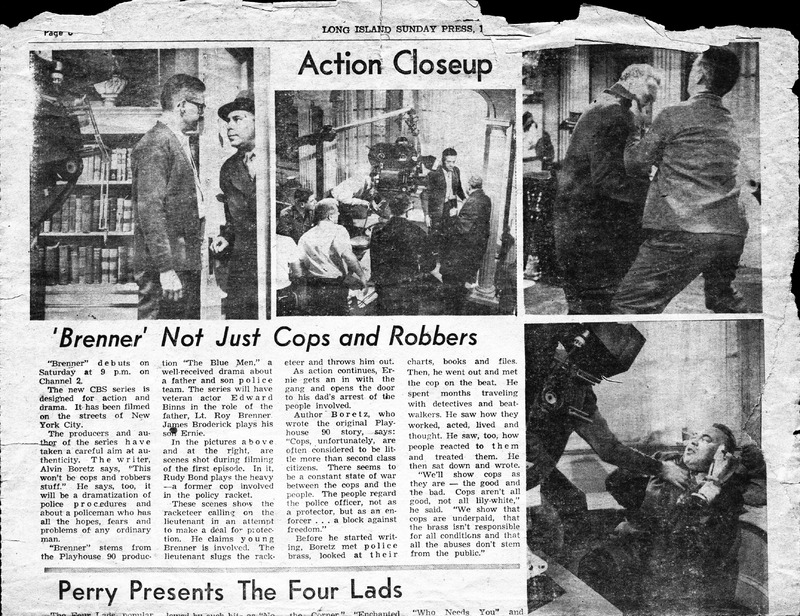The Early Days (1950s - 1960s)

The longest and most prolific section of Alvin Boretz's career rests in the medium of television. In her book Make Room for Television (1992), media historian Lynn Spiegel notes that while television was welcomed into American homes during the late 1940s and early 1950s, it was also heavily questioned and even feared. Entering television writing in 1951, Boretz witnessed the rise of television and learned that the industry behind the screens was more complicated than he had experienced while in radio.
Due to his work on the radio series Big Town, Boretz began to write for the television adaptation, which ran from 1950 to 1956. In these early days of the 1950s, Boretz's was focused on writing for series such as The Big Story, Treasury Men in Action (T-Men), The Man Behind the Badge, and Martin Kane, Private Eye. Since Boretz already knew the format of episodes for The Big Story, the challenge became writing stories that would be as captivating on screen as on the radio. Boretz notes the series format was simple "actual news stories were chosen...some of which dated back years before...and the reporter was given a five hundred "award" by Pall Mall cigarettes, the sponsor." As the series transitioned to the screen, burgeoning actors began to star in episodes. James Dean starred in an episode by Boretz called "Rex Newman, reporter for the Joplin, Missouri Globe News-Hearld" which was an update of the original broadcast of the episode from 1953. Other episodes, like "The Hoax," starred a young Jerry Stiller and "Jack Weeks of the Houston Chronicle" starred Ray Walston. While writing episodes for Big Town, Boretz also joined the writing cast of Treasury Men in Action or T-Men (1950-1955), a popular crime drama series that ran on ABC for its first season before moving to NBC for the remainder of its run. Alvin wrote for the series as it transitioned from a live procedural to a filmed production, and this change was one of the first of many that Boretz would witness as networks began to see the value in pre-taped series. As a whole, the series highlighted many actors like Claude Akins, Charles Bronson, Carolyn Jones, and, once again, James Dean.
Similarly to both Big Town and T-Men, episodes of The Man Behind the Badge, a police procedural series, provided a steady format that involved individual "cases" in each episode. Since the series only ran for two seasons, there were fewer guest stars, but notable actors such as Anthony Perkins and Linda Stirling did make appearances. While these series were more procedural than narrative-focused, they did lead to Boretz's opportunity to be a head writer on the crime show Brenner.

Brenner "The Thin Line" (Script Cover Page)
The original concept for Brenner began with Boretz's episode for the anthology drama series Playhouse 90, called "The Blue Men." The episode was critically lauded for its narrative and characterization, leading Boretz to rework the story and script into a new screenplay titled "Brenner" with the first episode called "The Thin Line." The series follows the Brenner family, a father-and-son duo working at the NYPD, as they fight and solve crime together. Brenner ran for two seasons, but even though the basis for the series began with Boretz's original script for Playhouse 90, his name does not appear in credits for the series creation. Boretz contributed numerous scripts to the series until its run ended in 1961. Boretz's early career in television reflects how the dominant medium of television worked to create popular series that were often tightly formatted but beginning to break the boundaries of narrative structure and subject matters previously established by radio.